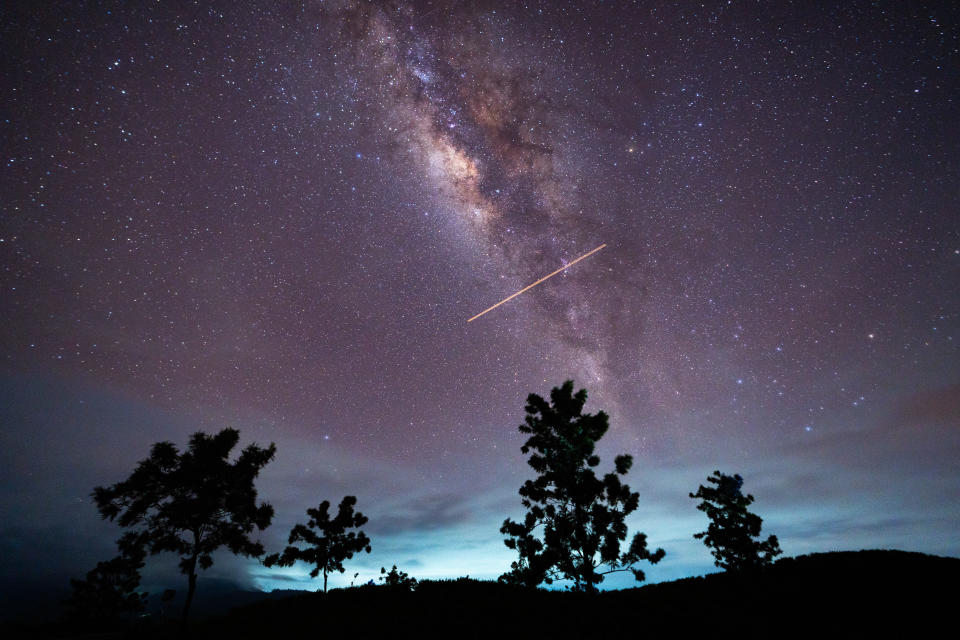Get ready for one of the best meteor showers of the year, astronomy fans: the Eta Aquarids are about to peak, according to NASA.
The shower will peak overnight Sunday into Monday, although meteors from the shower will be visible throughout the week, NASA said. The peak is happening around the new moon, which means the sky will be darker and the meteors will be easier to catch a glimpse of.
When and where to see the Eta Aquariids meteor shower
The best time to see the Meteor rain It is during the night from Sunday to Monday. The shower will be seen in the Northern and Southern Hemisphere during the early morning hours, although the best viewing experience is in the Southern Hemisphere. Viewers in the Southern Hemisphere can catch 40 meteors per hour, while in the Northern Hemisphere, viewers will see 10 to 20 meteors per hour.
Eta Aquarid meteors in the Northern Hemisphere are often Earthgrazers – long meteors that appear to graze the Earth’s surface at the horizon.
For the best view, head to an area well away from city or street lights. NASA advises lying on your back with your feet facing east. It will take about 30 minutes in the dark for your eyes to adjust enough to see meteors.

“Be patient – the show will last until dawn, so you’ll have plenty of time to check it out,” NASA said.
After the peak, rain will continue until May 27th.
What makes the Eta Aquariids special?
The Eta Aquariids are known for their speed. NASA notes that fast meteors can leave bright trains behind, which can last from several seconds to minutes. The Eta Aquariids travel 44 miles per second.
The meteors in the Eta Aquariids come from space debris originating from Halley’s Comet. Halley launches a layer of ice and rocks into space each time he returns to the inner solar system. The space dust released forms two meteor showers per year: the Eta Aquarids in May and the Orionids in October.
What are meteor showers?
While meteors – space rocks that enter Earth’s atmosphere – streak across the sky every night, meteor showers happen less frequently. Many meteors hit Earth’s atmosphere over a short period of time during meteor showers. As they pass through the atmosphere, meteors leave trails of light caused by the hot, glowing air.
Most meteors burn up when they fall, but there are some that survive the trip and reach Earth. These are considered meteorites.
Look up – what else can you see in the sky this spring?
Astronomy fans can check out the Flower Moon this month as May’s full moon rises. May’s full moon will reach peak illumination on May 23, according to NASA. Specific details from the Old Farmer’s Almanac moonrise times for different zip codes in the United States.
The May full moon is the last full moon of spring. The June full moon reaches peak illumination on June 21, the day after the summer solstice.
The next meteor shower will be South Delta Aquarids in July, according to the American Meteor Society.
Longtime Trump aide Hope Hicks takes the stand at New York trial
Louisiana Boy Receives Surprising Reward After Generously Donating His Only Dollar
Texas family describes harrowing escape from devastating tornado












/cdn.vox-cdn.com/uploads/chorus_asset/file/25478660/1838926059.jpg?w=300&resize=300,300&ssl=1)











/cdn.vox-cdn.com/uploads/chorus_asset/file/25434275/2150986120.jpg?w=300&resize=300,300&ssl=1)












